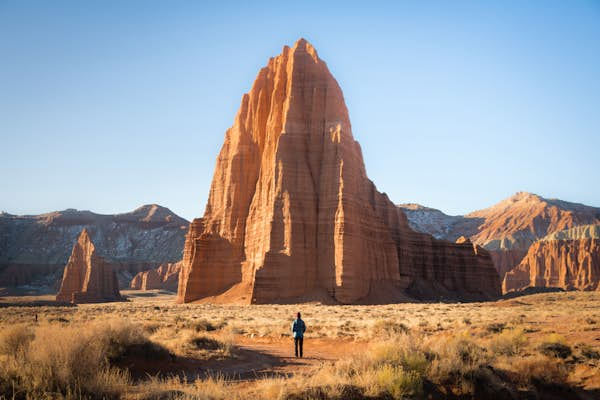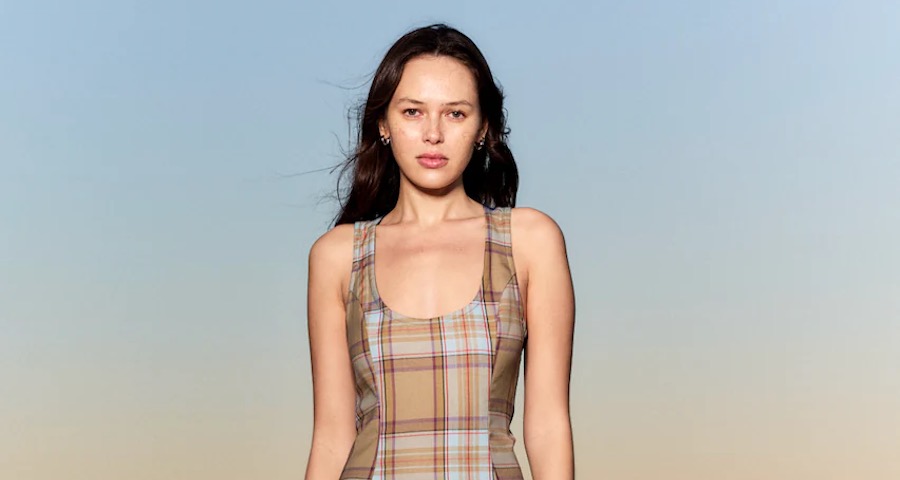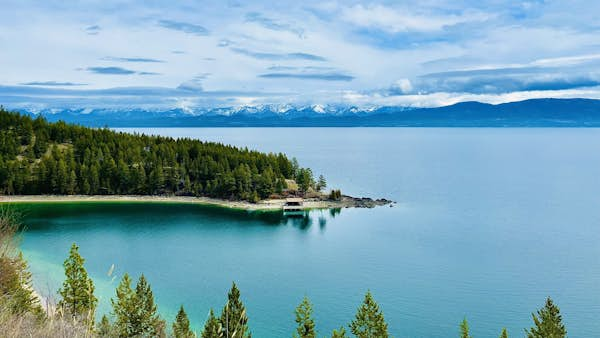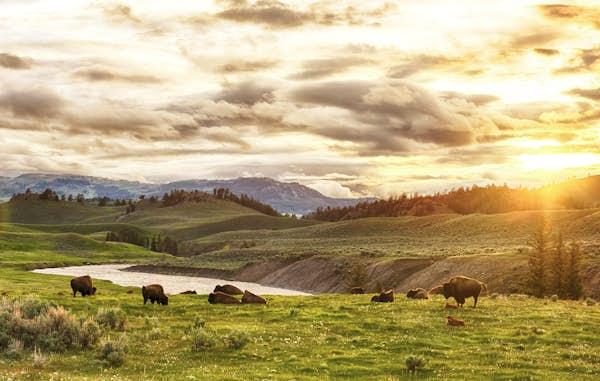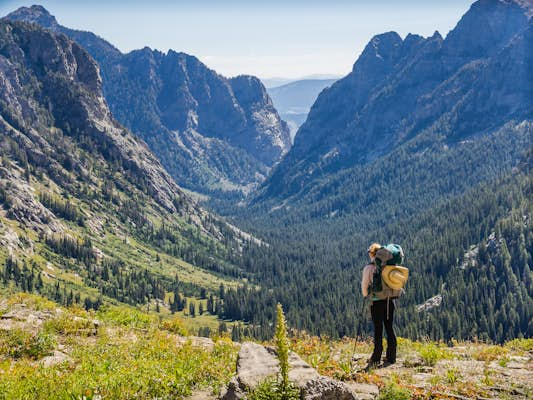9 of the best places in the US to escape the crowds
With its epic expanse and diversity of landscapes, it seems like it should be easy to find some solitude in the USA.
But that’s not always the case, with some of the country’s beauty spots getting clogged with visitors, particularly during the summer high season. That’s why we asked our expert writers and staff to share some of their favorite places in the country to find some space.
Here are 9 of the best places in the US to escape the crowds.
1. Capitol Reef National Park, Utah
Recommended by Deepa Lakshmin
The thing about hiking at popular national parks is that you will inevitably get stuck in a bottleneck waiting to scramble over a rock or shuffle through a narrow path. That can kill the mood, so I was pleasantly surprised by how quiet Capitol Reef – one of Utah’s Mighty 5 national parks – was.
I hiked two trails, Sulfur Creek and Cohab Canyon, that were gloriously empty. Following Sulfur Creek through slot canyons and over waterfalls was my favorite, because the 5.8-mile trek feels completely untouched by humans. No trail markers, no signs, no bathrooms, no trash cans: just you in the wild. (And preferably a guide who knows where to go. I’m a newbie hiker and wouldn’t do this solo, especially because the water level can rise as high as your chest depending on conditions.)
Stay in Torrey, UT for easy access to the park; I checked out the new Skyview Hotel on a trip last year, which is ideal for glamping under the stars. There aren’t a ton of accommodation or dining options in such a small town, but that also means there’s really no wrong choice. Wild Rabbit Cafe is a must for breakfast, and have a nice sit-down dinner at Hunt & Gather. Fun extras are a cider tasting at Etta Place and a massage at Red Sands’ spa. Your muscles will thank you after all that trekking.

2. Montana Badlands
Recommended by Bailey Freeman
Montana’s mountains may attract most of the state’s attention, but its eastern badlands are perfect for those looking to truly escape it all. Characterized by striking landscapes, dinosaur fossils, dark skies, and a perplexing lack of tourists, this well-kept secret will illuminate Earth’s staggering history – with hardly another visitor in sight.
Hike through the pyramid-like mounds that punctuate the prairie in the Terry Badlands, or camp on top of the banded cliffs that make the whole area look like a painting. Just down the road, you can also wander the otherworldly hoodoos and cliffsides of Makoshika State Park, one of Montana’s hot spots for dinosaur fossils; both Triceratops and Tyrannosaurus Rex fossils have been found here, and scientists are discovering more specimens all the time. At night, the sky opens up to a flood of stars that overlook the ancient terrain; bring a telescope or a camera and scope out the wonders of the heavens.

3. Coldfoot, Alaska
Recommended by Erin Kirkland
Unpretentious and built for function in Alaska’s far north, the tiny community of Coldfoot delivers for people wanting to experience Alaska’s remote spaces and adventurous activities. Essential as a truck stop for drivers transiting the Dalton Highway across the Arctic Circle, visitors arrive via auto (note that most rental agencies will not allow travel along this mostly gravel road) along the highway, or by air, thanks to several small carriers out of Fairbanks, 253 miles south.
Coldfoot sits at the base of the stunning Brooks Range and provides access to year-round recreation. From June 1 to mid-September, stop at the Arctic Interagency Visitor Center for information, maps, ranger-led presentations, and interpretive displays showing the region’s history. Coldfoot Camp can assist travelers wanting to hike or raft deeper into the Brooks Range and Gates of the Arctic National Park and Preserve or Arctic National Wildlife Refuge, with gear and guides provided. In the fall and winter months, Coldfoot becomes a top place to view the sweeping and colorful northern lights. Nightly tours departing from Coldfoot Camp with options to add snowshoeing or fat biking to the adventure.

4. Hovenweep National Monument, Four Corners, USA
Recommended by Liz Prado
Surrounded by high desert and stunning red rock canyons, Hovenweep National Monument is a little-visited archaeological zone in the Four Corners region, where Arizona, New Mexico, Colorado and Utah meet. It’s a place to escape the throngs at nearby national parks and imagine what life was like long ago. The one-time home of the Ancestral Puebloans, Hovenweep is a cluster of six ancient villages built between 1200 and 1300 CE and peppered across Colorado, Utah and the Navajo Nation. Wide expanses of dirt roads and trails connect the sites, a treasure trove of teetering towers and sacred kivas perched on canyon rims.
The largest and easiest to access is the Square Tower Group, a clutch of well-preserved structures along a 2-mile trail near the visitor center in Utah. There’s a first-come-first-served campground as well as ranger-led programming. The other archaeological sites are between 4 and 9 miles away; before heading out, ask about trail and road conditions and grab a map as GPS is unreliable and cell service almost nil. Wherever you explore, stay for the stargazing – Hovenweep is also one of the world’s rare gold-tier International Dark Sky Parks, where up to 15,000 stars can be seen on cloudless nights.

5. Superstition Mountains, Arizona
Recommended by Melissa Yeager
Eager hikers visiting Phoenix swarm iconic Camelback Mountain in Scottsdale to get a photo from the humpback-shaped mountain for their Instagram. The resulting crowds along the less-hiking, more-bouldering route make it one of my least favorite hiking experiences in Arizona. Break free of the crowd, and take the drive east on Hwy 60 to the Superstition Mountains. The desert dazzles in this area, with stunning saguaro cacti and views for days.
Hieroglyphic Trail will give you a less intense hike with the payoff of seeing petroglyphs near a waterfall. More intermediate hikers will find Fremont Saddle a delightful route. (Bring a lunch to enjoy at the top as you rest and admire sweeping views of Weavers Needles.) Experienced hikers looking for a rugged challenge can hike and climb the boulders for a spectacular view of the region from the top of Flat Iron. The Superstitions are gorgeous but wild. Cell service in the area is scarce, and in some places you’ll need a car that can navigate unpaved roads. Make sure to bring enough water for your trip as trailheads may not have public water dispensers.

6. The Shenandoah Valley, Virginia
Recommended by Ann Douglas Lott
Surrounded by Virginia’s Blue Ridge Mountains and West Virginia’s Alleghany Mountains, with the Shenandoah River flowing its entire length, this 140-mile stretch of paradise is often overshadowed by the majestic mountain ranges of the western US. But this place practically begs to be your next scenic road trip. Drive the curving roads of the Blue Ridge Parkway or Skyline Drive, or meander along wide open back roads (or follow I-81 if you’re short on time), stopping into charming, historic small towns like Staunton, Harrisonburg and Lexington for antiquing and brewery-hopping. Chill out at sprawling vineyards, pick up fresh bread from a local farm or relax under curtains of fragrant lavender at a lavender farm. Then get outside and trek a section of the Appalachian Trail found inside the state’s big and beautiful beast: Shenandoah National Park. The slogan “Virginia is for lovers” rings true in the Shenandoah Valley. Life moves enchantingly slowly, and the romance of the rolling Blue Ridge Mountains is undeniable. Oh, and once you’ve experienced your first Shenandoah sunset, you’re hooked.

7. Bellingham, Washington
Recommended by Chamidae Ford
In western Washington, trees and waterfront collide for unmatched beauty. If you’re looking for a town that truly encapsulates the PNW spirit but lacks the crowds, Bellingham is for you. Nestled 30 minutes from the Canadian border, Bellingham is a quaint and idyllic oasis bursting with outdoor activities. Opt for a slight detour along Chuckunut Drive rather than I-5 to fully experience the region’s beauty. Chuckanut provides excellent views of Sammish and Bellingham Bay, with tons of hikes (Oyster Dome is a favorite) and viewpoint stop-offs.
In town, grab lunch at Mambo Italiano — the sandwiches made with in-house focaccia are unforgettable. Browse the indie bookstore, Village Books, for your next great read, and in the summer, head to their lawn on Mondays for an outdoor movie. Ride your bike along the bay or enjoy a sunset picnic along the water at Boulevard Park. You can’t visit the PNW without stopping by one of the numerous breweries in the area; it’s a classic local hang. Otherlands Beer is a stellar option for top-notch brews and good vibes. And when you need a late-night snack, stop by the beloved college haunt, AB Crepes.

8. Channel Islands National Park, California
Recommended by Brekke Fletcher
If you’re looking to get off the grid and are willing to hop on a boat, then the Channel Islands National Park is for you. Located off the coast of Southern California, between Santa Barbara and Los Angeles, this wildly wonderful archipelago carries the distinction of being one of California’s least-visited national parks. To get there, you’ll need to take a tour with an outfit like Island Packers, which provides two points of departure from Ventura and Oxnard.
Five islands make up the park: San Miguel, Santa Rosa, Santa Cruz, Anacapa and tiny, southern Santa Barbara, which is much further south. Visiting any one of them allows you to see and experience a place that is mostly as it was for tens of thousands of years. From land and sea, behold stunning, rugged landscapes and look out for some of the 150 plant species and a few animals that are unique to the islands. If you wish to lengthen your time on the islands there are several campgrounds for overnight stays you can reserve in advance. And if you plan to visit between June and November, you can add whale-watching to your excursion.

9. Jayuya, Puerto Rico
Recommended by John Garry
Just a domestic flight from the mainland US, travelers heading to Puerto Rico and searching for solitude should head to Jayuya, nestled in the Central Mountains. Here, crowds of a different kind dominate – like choirs of coqui frogs and gangs of roving roosters. Legend says native Taíno populations escaped Spanish persecution by hiding in the Central Mountains until the mid-19th century, and now, Jayuya serves as the island’s Indigenous epicenter, with museums celebrating local heritage and ancient petroglyphs aplenty.
It’s easy to see how Jayuya held on to its traditions. Imposing mountain peaks protect the town – including the 4398ft Cerro de Punta – and even today, the only way to get here is along razor-thin roads that twist and tumble like a roller coaster. Those who brave the journey reap major rewards: barely-trafficked hikes around Toro Negro State Forest, tiny group tours at working coffee farms like Hacienda San Pedro and jungle pools fed by waterfalls like Cascada Las Delicias. After a dip in Jayuya’s chilly waters, head to La Destileria Craft Spirits for a taste of pitorro, a locally-made moonshine rum that will warm your soul.
